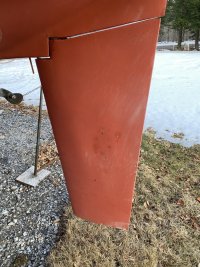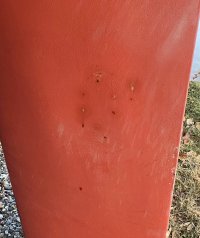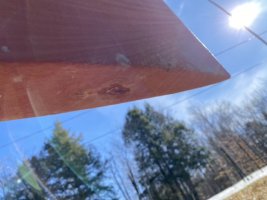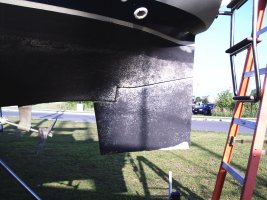I was walking around our boat the other day checking the jackstands, as up here in Maine we are in mud season, and the frost plays games with the ground, and noticed these spots that look like rust on the rudder. Has anyone else seen something like this? When the boat was surveyed during purchase 2 years ago the surveyor said the moisture meter was high on the rudder, but then said they were "all like that". Now I am concerned that we might have a issue with the grid inside the rudder. Anyone else seen something like this?

closeup, showing what looks like a round pattern and maybe a crack at the top?


closeup, showing what looks like a round pattern and maybe a crack at the top?





